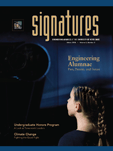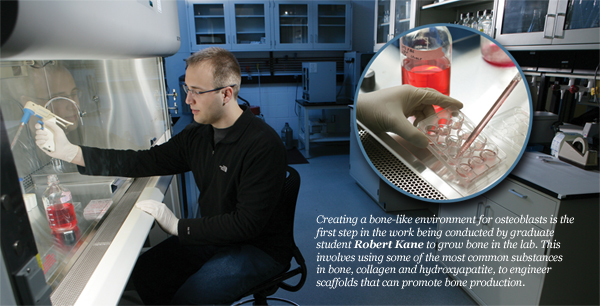Bioengineering Ph.D. Now Offered at ND
“Bioengineering” is one of those buzzwords,
like “nano,” that people seem to throw around indiscriminately.
But there are reasons that industries and academia get excited about emerging
technologies. It’s because of the possibilities, the “bold new
frontiers” that are opening to exploration. From orthopaedics and medical
diagnostics to environmental engineering, and modeling and simulation techniques,
bioengineering offers an incredibly diverse range of fields for students
considering their future. In addition to undergraduate tracks, graduate students
may now obtain a doctoral degree from the University in bioengineering through
the College of Engineering.
What is especially intriguing about the program
is its interdisciplinary nature. The college provides training in a wide
range of engineering and biological fields (including physical, chemical,
and mathematical sciences, as well as engineering principles). As important,
the program encompasses each department within the college, with faculty
from the colleges of engineering and science participating.
An entering Ph.D.
student is admitted to the Graduate School and bioengineering graduate program
with simultaneous admission into one of the traditional departments within
the college, which serves as a student’s home department. Coursework
emphasizes depth in that particular engineering discipline, while incorporating
additional studies in areas of specific interest to each student.
Students work in state-of-the-art facilities, such as cell and tissue culture laboratories;
biomechanical testing areas; imaging facilities that include computed tomography,
electron microscopy, and light miscroscopy; microfluidics laboratories; high-performance
computing clusters; and micro- and nanofabrication rooms.
The program is new, but it is growing, and students, who work closely with faculty and industry
collaborators, are already making an impact through their work.
|


